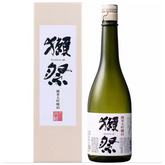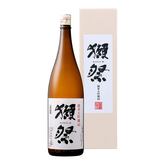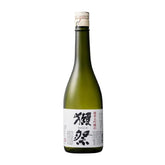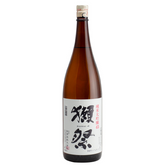Lesson 2: What is rice polishing ratio?
Each step in the sake-brewing process is critical to sake production, but rice polishing, in particular, garners a lot of attention due to its influence on sake categorization and pricing. Rice polishing is the process by which the outer layers of a grain of rice (the bran) is polished or “milled” away. Here, we discuss the purpose of rice polishing, how it’s done, and its effects on the categorization and flavor profiles of sake.
Purpose of rice polishing
Simply put, “seimaibuai” (rice polishing ratio) is a description for the percentage of grain that remains after a part of the rice has been polished away. For example, sake with 60% seimaibuai means that about 40% of the rice’s outer layer has been milled away.

Why is rice polishing necessary? Rice polishing shaves away protein and fat, leaving the starchy interior used in saccharification (the conversion of starch to sugar), which is necessary to brew alcohol. Brewers determine the level of rice-polishing and gently mill away these elements to achieve the desired taste profile of the final product.

Rice polishing helps to manage the protein and fat that affect the brewing process and flavors of sake.
These days, breweries use vertical rice polishing machines that are very specific and automated; these machines are a far-cry from the traditional methods of long ago!

Vertical rice polishing machine
Higher rice polishing ratio represents the large amount of outer parts of rice remaining after polishing, which typically boasts rich umami from the rice with fuller body. On the other hand, lower rice polishing ratio represents sake brewed with more milled rice, which often results in cleaner and fruitier taste notes. Many brewers make products with different rice polishing ratios under the same brand to cater to different preferences and occasions.

Samples of Yamadanishiki rice used by Dassai. Left: brown rice. Right: 77% of the rice is milled away (23% rice polishing ratio). Bottom: 61% of the rice is milled away (39% rice polishing ratio).
Categorization of sake
Rice polishing ratios and brewing methods typically determine different categories which gives different characteristics. The classifications for rice polishing ratio is quite extensive as the ratio of ingredients like koji and alcohol (if added) can determine its categorization. But the most significant difference is between “futsushu” (table sake) and “tokutei meishoshu” (specially designated sake). Futsushu is made with a polishing ratio of over 70%, contains non-specialty ingredients, and more than 10% brewer’s alcohol. Tokutei meishoshu is specially designated (premium) sake that follows specific production methods and uses approved ingredients for this category. Although the majority of sake produced in Japan is futsushu, most sake you find in the United States are tokutei meishoshu such as the premium junmai, ginjo and daiginjo labels. At Tippsy, we carry only a few futsushu labels.
Generally speaking, the more polished rice becomes, the more expensive the final product will be due to smaller amounts in yields. Ginjo is the name of the category using only 60% or less remainder of rice grains after polishing to brew sake which typically has lighter body and fruity aromas. The focus on ginjo-type sake is relatively new, as a result of the lifting of taxes on sake with higher rice polishing ratios and the new sophisticated consumer demand for high quality products.

Overall production of different types of sake in 2017. Futsushu continues to be mass-produced but premium sake is growing in demand.
Although a lot of attention is given to rice polishing ratio by sake professionals and industry competitions, it’s important to not get too caught up in analyzing digits. You might miss out on other good sake if you rely too heavily on it! Judging sake solely by polishing ratio is not the best way to find your favorite sake. Each sake has a character of its own, reflective of where it was brewed and sourced in Japan, and trying sake of different categories is a great way to expand your dining experience.







